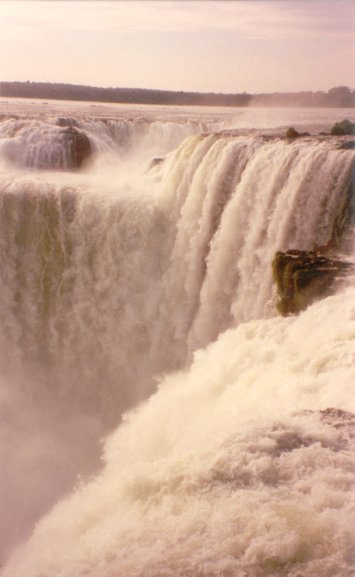
One can also do several excursions around the national park, including a zodiac trip along the river below the falls. It´s a truly memorable experience as the boats go right beneath some of the waterfalls and you get completely drenched (luckily they also provide you with plastic bags in which to place your belongings so they don´t get wet, something Daniel forgot to do with his mobile phone!).
On the Brazilian side there is also a bird sanctuary that has an extensive collection of indigenous birds, many of which are on the verge of extinction, such as the beautiful hyacinth and scarlett macaws. And then, as if to show that humans will not be outdone by nature, just upstream along the mighty Parana river there is the biggest hydroelectric dam in the world: the Itaipu dam. This beast, that cost $18bn to build (and thereby constitues a great chunk of both Paraguay´s and Brazil´s foreign debt), provides all of Paraguay´s electricity needs and 25% of Brazil´s. The statistics are mind-boggling: enough steel was used in the construction to build 380 Eiffel towers and enough concrete to pave a highway from Moscow to Lisbon. In anybody´s books that is just BIG. There´s a free tour of the dam, including a promotional film that is just ridiculously biased and doesn´t have the slightest hint of a possibility of a mention of the enormous environmental impact caused by the construction (the dam was built on the site of a waterfall that was reputedly 30 times larger than Iguazu itself), which lets you get up close to the monster turbines and sluice gates and just marvel at the sheer size of everything. Personally I´m not sure about hydroelectric dams: on the one hand they produce an unending source of electricity with far less carbon dioxide production, whereas on the other hand you have irrepairable environmental damage. But then I suppose it does produce an incredibly huge amount of power.
No comments:
Post a Comment